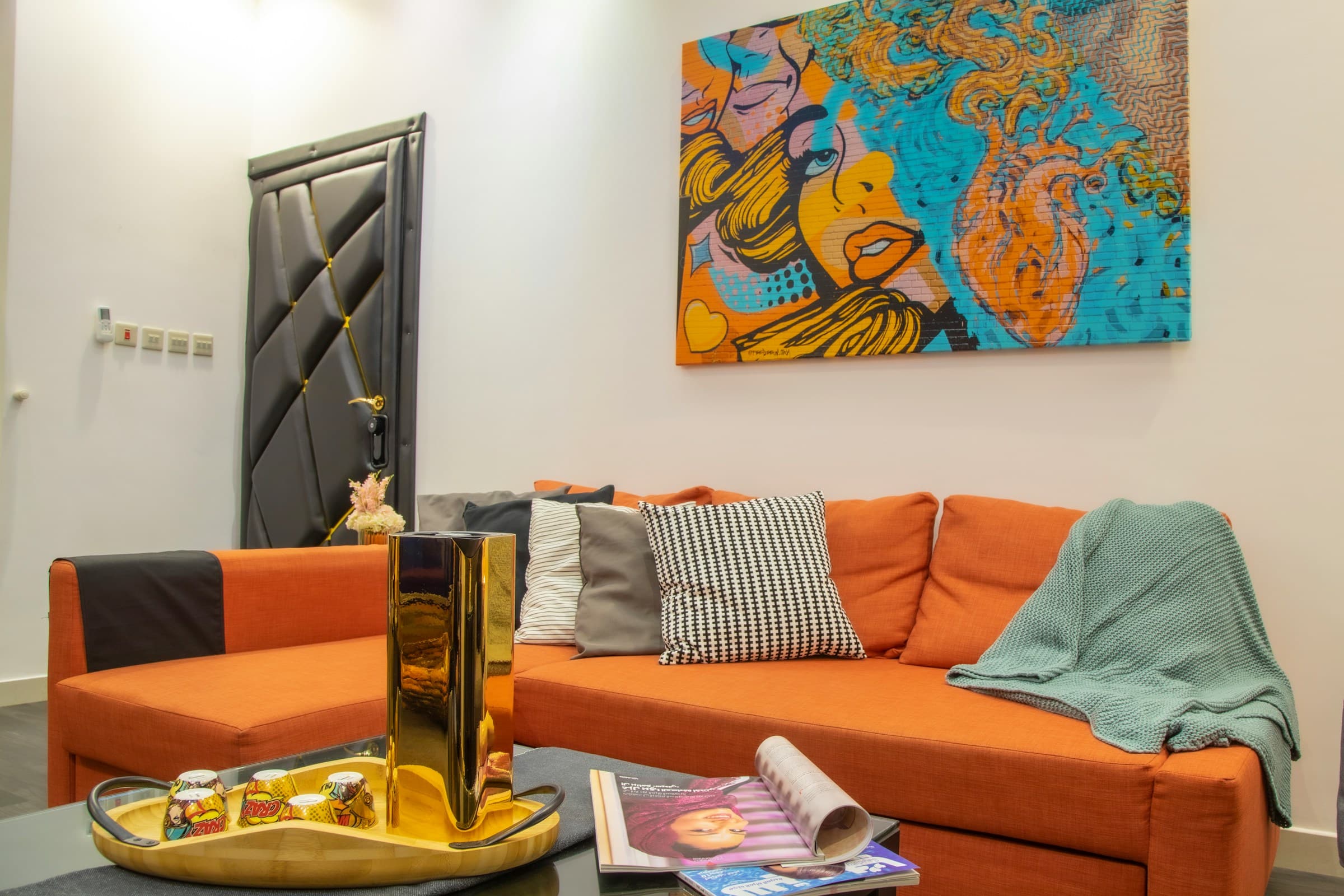What’s the Best Solution for Soundproofing a Shared Wall in a Semi-Detached House?

In the hustle and bustle of modern living, peace and tranquility within the confines of your own home have become not just a luxury, but a necessity. The noise from a lively party next door, the incessant sound of television from the living room of your neighbour, or just the regular hustle of daily life can be a nuisance when it comes into your personal space. Especially when you live in a semi-detached house that shares a common wall with neighbours, soundproofing becomes crucial in maintaining your sanity and comfort. In this article, we will explore the best solutions for soundproofing a shared wall in your semi-detached house, discussing various methods and materials that can help you achieve acoustic tranquility.
Understanding the Basics of Soundproofing
Before diving into the nitty-gritty of how to soundproof a wall, it’s essential to understand some basics of soundproofing. Soundproofing is the process of using certain materials and techniques to reduce the noise that travels through walls and floors of your house. This is achieved by adding density and decoupling to your existing structures which helps in noise reduction. Soundproofing not only shields you from external noise but also ensures that your activities do not disturb your neighbours.
A lire aussi : What’s the Best Way to Design a Garden Patio for Year-Round Use?
Various factors such as the type of noise, its source, and the construction of your house can affect the effectiveness of soundproofing. Hence, selecting the right soundproofing system is important. Materials used for soundproofing, such as acoustic foam, insulation boards, and mass-loaded vinyl, help in reducing the noise levels significantly.
Soundproofing Techniques for Shared Walls
When it comes to soundproofing a shared wall, there are several techniques you can employ. The choice of method will depend largely on the level of noise, the nature of the wall, and your personal preferences.
A voir aussi : How to Plan a Kitchen Renovation for Serious Home Chefs with Restaurant-Quality Gear?
One of the most effective ways to soundproof a shared wall is to add an extra layer of drywall. This method, also known as damping, involves attaching a layer of specialised soundproofing drywall to the existing wall. It works by converting the sound energy into heat, thereby reducing the noise that passes through.
Another technique is decoupling. This involves creating a gap in the wall to disrupt the path of sound waves. This can be done by installing a resilient channel or a soundproofing clip system. However, this method might be more invasive and needs careful consideration regarding the structural integrity of your house.
Insulation is another common method used in soundproofing. It involves filling the cavity within the wall with soundproofing insulation. This not only helps in noise reduction but also improves the thermal efficiency of your house.
Choosing the Right Soundproofing Material
The choice of soundproofing material plays a significant role in the effectiveness of your soundproofing project. Different materials offer different levels of noise reduction and come with their own set of pros and cons.
Acoustic foam panels are a popular choice for soundproofing. They are effective in absorbing sound and reducing echo. These panels can be easily attached to your wall and are available in various thicknesses and designs.
Mass-loaded vinyl (MLV) is another effective soundproofing material. It is a thin, flexible sheet that is dense yet flexible. It works by adding mass to the wall, which helps in blocking sound waves. MLV can be easily installed and is an excellent choice if you want to retain the aesthetics of your wall.
Insulation boards are another good option for soundproofing. They are installed within the wall cavity and are effective in both reducing noise and improving thermal efficiency.
Soundproofing Without Major Renovations
While the methods described above may require significant changes to your wall, there are also ways to soundproof your wall without major renovations. These methods might not be as effective as the ones above, but they can certainly help in reducing the noise levels.
Hanging soundproofing curtains or blankets is one such method. These curtains are made of dense material that absorbs sound. They can be easily hung on your wall and can also add to the aesthetics of your room.
Another method is to use furniture strategically. Placing large furniture items such as bookcases or wardrobes against the noisy wall can help in reducing the noise.
Regardless of the method you choose, remember that soundproofing a shared wall in a semi-detached house can significantly improve your comfort. While it might require an investment of time and resources, the tranquility and peace it can bring to your life are invaluable.
Party Wall Soundproofing Materials: Acoustic Insulation and Plasterboard
When talking about party wall soundproofing, two materials that often come to mind are acoustic insulation and acoustic plasterboard. These two materials are particularly useful in noise reduction and are commonly used in shared or party walls of semi-detached homes.
Acoustic insulation is a specialised form of insulation designed specifically for soundproofing purposes. It is typically made from fibreglass or rock wool, both known for their excellent sound absorption properties. When installed properly within a stud or party wall, the acoustic insulation traps and absorbs sound waves, significantly helping to reduce noise. This material not only decreases sound transmission but also improves the thermal efficiency of your home.
On the other hand, acoustic plasterboard offers a slightly different soundproofing solution. More dense than regular plasterboard, it effectively blocks noise transmission due to its high mass. Used in conjunction with acoustic insulation, it can significantly enhance the overall soundproofing effectiveness of your wall.
However, it’s worth noting that while these materials are effective, they need to be installed properly. Incorrect installation may result in gaps or weak points through which sound can still travel. Therefore, it’s essential to either hire professionals or carefully follow installation guidelines if you are going the DIY route.
Soundproofing Party Walls: The Importance of the Wall System and Floor Joists
The wall system and floor joists also play a significant role in the soundproofing process. A well-designed wall system and properly insulated floor joists can greatly enhance the effectiveness of your soundproofing efforts.
The wall system, in this context, refers to the structure of your party wall. This includes the type of wall (wooden or concrete), the presence of cavities, and the materials used in the wall’s construction. A wall system that has been designed with soundproofing in mind will typically incorporate dense materials and have cavities that can be filled with acoustic insulation for noise reduction.
As for floor joists, these are the horizontal structures that support the floor of your house. Soundproofing them is often overlooked, but it’s crucial, especially for semi-detached homes. Sound can easily travel through the floor to the shared wall and beyond. Therefore, insulating the floor joists can prove to be a valuable step in your overall soundproofing plan.
Remember, every aspect of your house’s construction plays a part in the overall noise levels. A comprehensive approach considering all these factors will yield the best results in maintaining a peaceful environment.
Conclusion
Soundproofing a shared wall in a semi-detached house is no small task. The noise from noisy neighbours can disrupt your peace and quiet, and finding the right soundproofing solution is crucial. Whether you’re considering adding an extra layer of drywall, inserting acoustic insulation or using a soundproof plasterboard, understanding the basics of soundproofing and considering the impact of your wall system and floor joists will help you make an informed decision.
While it might seem overwhelming, remember that the ultimate goal is to improve your comfort and tranquility at home. In addition, soundproofing has the added benefit of improving your home’s thermal efficiency, making it a worthwhile investment. Whether you choose to DIY or hire a professional, the most important thing is to ensure the job is done right. A well soundproofed wall will shield you from external noise and make your semi-detached home a sanctuary of peace amidst the hustle and bustle of modern life.
